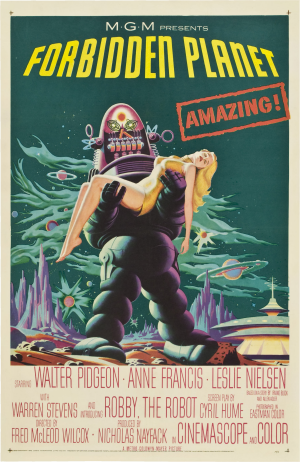Recently I saw a TEDx video by Scott Rickard about “The world’s ugliest music”; and I suggest you to watch it.
Usually good music is characterized by a balance between repetition and variation, applied to one or many of the components of the music itself: melody, texture, rhythm, form, and harmony. So what happens if we try to completely remove the repetitions?
In Scott’s music a math formula is used to generate all the 88 notes of a piano and their duration: starting from value 1, the next value is generated multiplying by 3 the previous one. If the value exceeds 88 then 89 is repeatedly subtracted until the value falls back in the 1-88 range:
1, 3, 9, 27, 81, 243–>154–>65, 195–>106–>17, … and so on
Sequences of this type are known as Costas Arrays (or Costas permutations) ; they have been studied by John Costas during his search for ideal sonar waveforms (‘pings’).
The duration of the notes are calculated using a Golomb ruler : each note is placed on the timeline in a special position (“mark”) in order to avoid any recognizable rythmic pattern. Indeed in a Golomb ruler the positions of the marks are such that all distances between them are distinct. The sequence of 88 note durations (expressed in 1/16th) used in the ugliest music is the following:
33, 3, 45, 10, 18, 47, 30, 311, 96, 46, 145, 37, 14, 17, 71, 22, 175, 132, 8, 66,
41, 251, 11, 50, 67, 59, 39, 23, 56, 34, 241, 2, 133, 35, 157, 204, 6, 108, 29,
57, 122, 52, 60, 89, 49, 85, 147, 218, 21, 32, 72, 44, 100, 19, 111, 16, 27,
178, 12, 181, 26, 38, 103, 99, 183, 20, 131, 78, 80, 4, 180, 15, 25, 212, 24,
286, 54, 9, 92, 5, 159, 7, 87, 42, 172, 13, 69, 1
You can listen to the music played on piano in the last part of the TEDx video; the title of the piece is “Costas Golomb N.1: The Perfect Ping” … and it is quite ugly. But I like creating “bleeps and bloops” on a modular synthesizer (actually I’m using VCV-Rack and a semimodular Behringer Neutron), and sometimes the results are often not really melodic … so I tried to make a patch and play the ugliest music on it.
I also made a simple sketch in Processing 3 in which the 88×88 grid (notes are from left-to-right, top-to-bottom) are displayed and a “sonar ping” is generated when each note is played.
If you want to experiment yourself you can download:
- the MIDI file of the ugliest music [ugliest.mid]
- the VCV-Rack patch (in which I replaced the Neutron input with a complex oscillator) [ugliest_demo.vcv]
- the Processing 3 source code of the video [ugliestdemo_source.7z]

